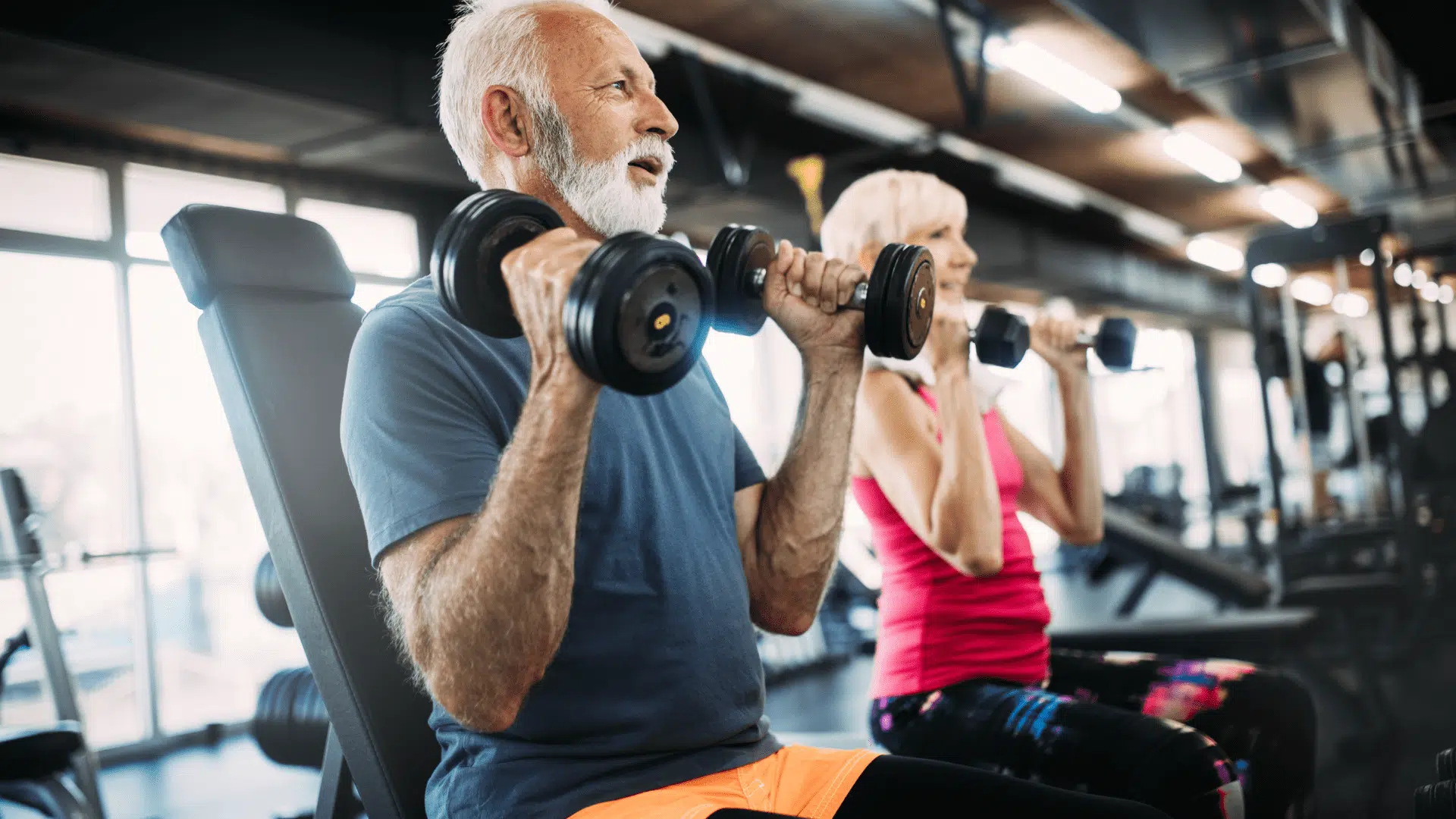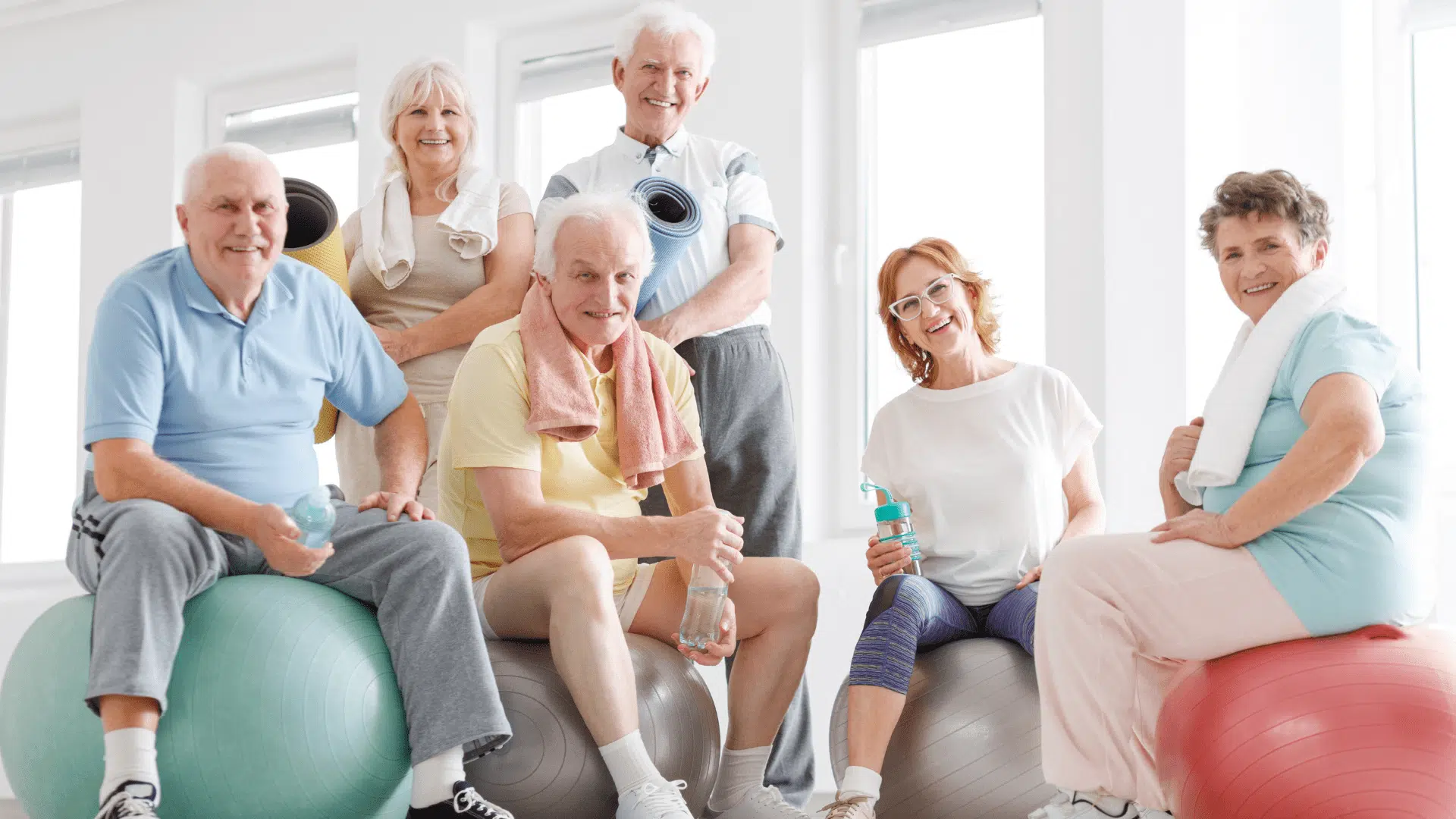“Is Your Gym or Fitness Club Primed to Capitalise on the Quality of Life Revolution?“
Here are our tips on increasing your Gym’s age range appeal
The years between 2020 and 2022 have already marked multiple unprecedented events and demographic shifts within the fitness industry, but there are more to come.
And unlike Covid-19 or the ensuing lockdowns, the trend we are discussing today isn’t an anomaly. In fact it is quite the opposite, a trend that we are all aware of, one of the key criteria that we use to measure the success of modern society.
People are living longer.
While this should not be shocking to you, we are approaching a series of unprecedented watermarks as a society. We are reaching a tipping point that will see many areas that are traditionally marketed towards younger people as a matter of course being forced to change that habit.
The simple truth is that the younger demographics account for less than they ever have before, and will only continue to account for less. This goes double for spending power. We should all be equally familiar with the headlines about the relatively diminished spending power of younger generations.
Now while we won’t spend time focusing on the potentially disastrous long-term societal consequences of this shift, we can focus on how to translate it into short-term benefit for your Gym or Fitness Club.
So how will we be targeting this ever-broadening demographic?
Well, first we will need to look at what they want, and what they are currently doing. The answer to these questions are thankfully one and the same, they are staying active for longer and trying to stay active for as long as possible.
This is a significant change in behaviour when contrasted to even twenty or thirty years ago.
Now not only are these people living longer, but they are also going out of their way to enjoy a better quality of life.
Compared to the younger demographics, people over 50 find themselves with a greater disposable income and significantly more time. This enables them to enact their growing desire to stay healthy, active and impactful within society.
In turn this means that an entire demographic that could easily be considered ‘beyond fitness’ is returning to it in a very specific way with a very specific aim.
For the purposes of this article, we will be calling this the Quality of Life Revolution.
While that doesn’t mean abandoning the historic bulwark of the fitness industry, 18 to 35 year olds, it does benefit us to compare the behavioural trends of these groups. While it is likely your fitness club is maximising engagement with people under 40, it seems unlikely that you are making full use of your outreach to the over 50s.
Besides the obvious benefit of being a new demographic with great expansion and longevity potential, it also has several inbuilt purchasing habit benefits over the younger demographics. A retention study by the IHRSA that looked at nearly 1.5 million fitness club members’ behaviours found that the movement habits of over 55s varies greatly from that of their younger counterparts.
Remarkably, they found out that over 55s stay with a gym or fitness club, on average, 22 months longer than any other age group.
This makes sense given what we know about people in the latter half of their life. People tend to be more established, with a deeper connection, whether it is economically, socially or emotionally, to any given place. Younger people shift location for work, shifting interpersonal relationships and even for no reason at all. Therefore the study seems intuitive.
An older customer at your Gym or Fitness Club may well be a customer that stays with you longer!
And it is important to keep this in mind. With minimal restructuring of what your gym or fitness club offers and how it is marketed, it could be earning more from a more stable customer base, all while improving the longevity of the community your business resides within.
What services can you offer to contribute to the Quality of Life Revolution?
Courses aimed at promoting longevity and quality of life work within different criteria to more traditional, youth-oriented courses. The metrics for success here are all about slowing down the process and effects of ageing while maximising functional fitness. Exercises are normally lower impact but with a focus on muscle health that can otherwise quickly decline in later years.
The four areas where the majority of quality and length of life is most pertinent and focused on include:
- Weight, posture and body composition
- Brain functionality, acuity and reactions and overall health
- Mobility and health of the Musculoskeletal system and joint flexibility.
- Cardiovascular health with a specific focus on the heart.
As you can tell, what is going to be important to these new prospective clients isn’t just exercise in the gym. Research has shown that they are also interested in dietary advice, breathing exercises and sleep regimes. However, all of this is rooted within a firm regime of exercise.
Results have been shown to be powerful and once someone has embraced this new lifestyle and forged the habit (habits that, as previously established, older demographics are more likely to maintain), they are less likely to relinquish that habit.
Whether it is weightless or maintaining mobility, reaction training, meditation or joint strengthening, there are a host of activities that can be accomplished in your Gym or Fit Club. The opportunities for your gym or fitness club to provide solutions that increase the quality and longevity of life are limitless.
So let’s dive into six different ways to start catering to this demographic and their demands, today!
6. Make your Gym or Fitness Club PART of their Quality of Life
1. Adapt The Message
As we discussed earlier, the messaging of many Gyms and Fitness Clubs in the UK is inherently youth-oriented. This can be off-putting for many elderly people, when they see a Gym advertised entirely by attractive and healthy under-thirties, it sends a clear message about the target of this establishment.
Conversely, even one or two older faces in an advertisement are likely to stand out to the demographic we are trying to reach, while going unnoticed by the younger people who take their status as the core fitness market for granted.
2. Shift Perspective
With that being said, we don’t mean that you should load your gym adverts full of strollers and walking sticks. The stereotypes about the over 60s that we have had are starting to disappear, and no one knows that as well as the current people within that demographic. Not feeling your age is the mantra, and as such the marketing should be aimed at people who are in extended middle age, with much of the vitality that they had at 45 or even younger!
This is a trend that has been thoroughly entrenched in Scandinavian society and contributed to a significant shift in the marketing of such fitness items as bicycles and swimming gear!
It is all about normalising the concept of older demographics working out, and that will never change if we shy away from including positive examples in advertising material. It will help you stand out and stand for positive change.
3. Social & Enjoyable
One opinion that crosses the generation divide (A rarity these days, it feels), is that many people young and old do not find exercise enjoyable. We have all heard polls and have had conversations where people say that they would only do exercise if ‘they found it enjoyable’ and that lifting weights or running on a treadmill doesn’t meet that marker for them.
They know it is good for them, but all that does is put it into the same category as vegetables or not spending money.
This is a hot topic when targeting young people, but it becomes even more pertinent when targeting people for quality and longevity of life.
Luckily, the regimes and exercises that we are promoting are not about lifting massive amounts of weight or running a virtual half-marathon. The strength that functional fitness has is that it can be lightweight, unintrusive and very social.
By focusing on the more casual and social nature of it, you will be able to draw a larger crowd. This is especially relevant amongst an older demographic who frequently struggle with loneliness.
You will find many councils within the UK are keen to reduce loneliness and increase the number of active adults in the community. Work with members of the community, whether paid or volunteered to exchange ideas and inspirations on what functional fitness could achieve. This will not only help bolster the earnings of your club but contribute meaningfully to the well-being of your community. Win-win.
4. Outreach
In the same way that a lot of the content of the marketing in the fitness industry is aimed at a younger demographic, so are the methods.
If I had to hazard a guess (based on data), I would say that your gym or fitness club’s main method of marketing engagement is social media. And that’s great!
But unfortunately the older demographic we are trying to target often have either significantly different social media habits, or none at all!
This presents a challenge, but not an insurmountable one. The main methods that we found effective while targeting the older demographic were more traditional (perhaps unsurprisingly). Going through the local council signposting system, as well as newspapers and leaflets distributed to communal areas within your local area all are more likely to resonate and reach your audience than an Instagram post!
5. Invest in the Knowledge
While many of the services that contribute towards quality of life and longevity classes are part of a standard PTs repertoire, there is always additional knowledge, technicals and qualifications to be gained.
It is also a good reason to expand the knowledge pool among your staff and potentially increase the number of classes you are running. By undertaking training that specialises in reducing the effects of ageing and maximises functional fitness. This, in turn, will enable your gym to have a much larger and more positive effect on the people and community around you. Quality of life and longevity exercises have been proven to reduce the occurrence of certain chronic diseases within the elderly community.
Most importantly, this will give you a competitive edge over the gyms and fitness clubs in your area that are not offering this service. This is a growing demographic and a trend that is only going to become further cemented as more people from the currently under 50 demographic continue to age. It has been shown that there is a significantly different attitude in the people currently crossing the threshold and a desire to enjoy a better quality of life for longer.
6. Make your Gym or Fitness Club PART of their Quality of Life
The easiest way to make sure that this group keeps renewing month after month and year after year? Make your Gym a fundamental part of their Quality of Life.
Positive association is a powerful force, and staying active and youthful is a point of pride for people of all ages. It is estimated that lifestyle has a massive impact on the rate and effect of ageing, potentially over 60% to 70%. With all the services we have previously discussed, a Gym that provides all of that will no doubt be a key player in the longevity and life quality of the older demographic that frequents it.
Making your gym or fitness club a place that cultivates positive mindsets, nutrition, movement, socialisation and exercise will help it become a beacon to the community. Focusing on quality and longevity of life can help put a gym or fitness club into a new light, opening up exciting avenues of business and clientele that previously didn’t seem possible.
Conclusion
In our intensely youth-centric society, it can be easy to forget that fitness should be for everyone and that everyone needs to move. We are coming out of an era where old age was seen as the end of an active lifestyle, but it has been proven time and time again that that does not need to be the case.
There is an opportunity for people to stay active, healthy and fulfilled for longer, and in turn, there is an opportunity for Gyms and fitness clubs to profit from this.
This is a revolution that has been 30 years in the making and is gathering speed. By putting your business at the forefront, there is the potential to make a meaningful impact on the community, and your staff and ultimately a profound impact on your gym or fitness club.






